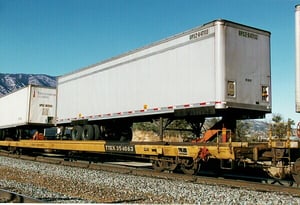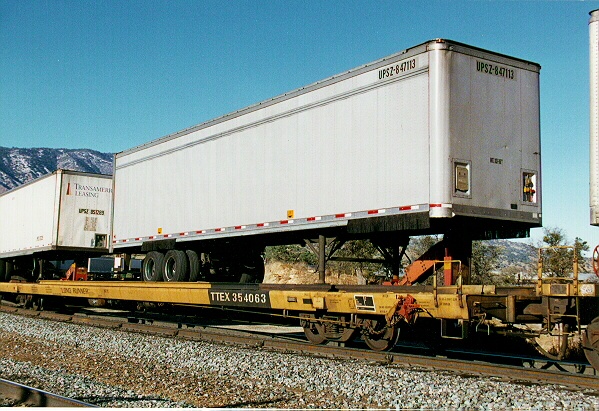
It is not new news that shippers all across the US are struggling to find cost competitive 53’ OTR truckload and domestic intermodal freight capacity to move their products. The struggle of shippers’ demand outstriping freight providers’ supply is best illustrated in the elevated truckload spot rate market, which is one of the best market examples of the law of supply and demand that indicates prices rise when there is greater demand for a product or service than supply.
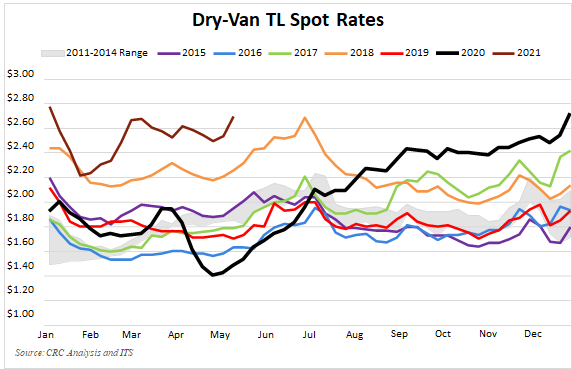
While the result of the dynamics of elevated freight pricing for logistics professionals includes unfavorable discussions with their finance department, it also brings about many conversations with sales and operations because their freight is not moving as planned.
What many shippers have done to help themselves, outside of digging deeper into their current carrier and freight broker base and supplement it with additional freight provider options, is look to TOFC intermodal service, trailer-on-flatcar, intermodal freight services available through various IMC’s or intermodal providers.

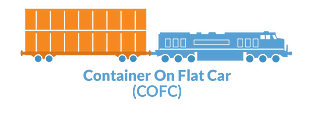
TOFC is a viable 53’ freight capacity option that addresses the following issues trucking and intermodal face in a constrained freight capacity market:
- Driver Shortages for Over-the-Road and Intermodal Freight Capacity
- Intermodal Chassis Availability
- Intermodal Gate Reservations
TOFC intermodal service has been forgotten 53’ freight capacity option for the following reasons:
- The class I railroads have been discouraging the service under the precision railroading operating model (PSR) business operations strategy by increasing the pricing for the service.
- The UNP, NS and CSX have been pushing the more efficient 53’ COFC, container-on-flatcar, service which has much better operating ratios versus the TOFC and is therefore more competitively priced against over-the-road truckload services.
While the railroads have been discouraging TOFC intermodal to shippers, current market conditions make it a perfect solution for those struggling to find price competitive solutions to help with the freight capacity shortage found within the truckload market.
 Pricing for TOFC intermodal falls between truckload and intermodal spot rate pricing, which adds to the reason many logistics professionals are bringing the service into their freight optimization routing TMS systems and routing guides outside of just another solution to their freight capacity problems.
Pricing for TOFC intermodal falls between truckload and intermodal spot rate pricing, which adds to the reason many logistics professionals are bringing the service into their freight optimization routing TMS systems and routing guides outside of just another solution to their freight capacity problems.
While InTek may be the only group talking about this option, others clearly have jumped on board to using TOFC intermodal, as indicated by the volume numbers published weekly by the Association of the American Railroads (AAR) and highlighted every week in the weekly intermodal spot rate blog published by InTek where the latest statistics have year-over-year growth pegged in the mid-20 percentage range.
The TOFC intermodal service brings with it added features not found in the COFC intermodal product that make its operations more aligned with OTR truckload.
Advantages of TOFC Intermodal Freight Service
- Faster Transit than COFC Intermodal Service
- Does Not Require Gate Reservations
- Does Not Require an Intermodal Chassis
TOFC Intermodal Runs on Premium Intermodal Rail Service
TOFC freight capacity operates on the premium rail service side of the class I railroads. The result is that TOFC has faster transit times, which are more in-line with truckload than the typical truck, plus one-day transit found with the majority of COFC intermodal service.
TOFC Intermodal Does Not Require Gate Reservations
Unlike COFC intermodal, container-on-flatcar, TOFC intermodal freight does not require a gate reservation at the intermodal ramp and gate reservations are challenging to obtain during capacity constrained freight markets.
The no gate reservation requirement is a by-product of operating on the premium class I rail service.
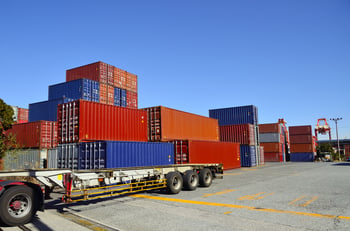 TOFC Intermodal Does Not Require a Chassis
TOFC Intermodal Does Not Require a Chassis
Since the equipment on the TOFC intermodal service is an over-the-road 53’ trailer, it could go without saying that an intermodal chassis is not required, but for those new to intermodal and with chassis being one of the three problems listed during freight constrained markets we included it in the TOFC service highlights.
Conclusion to Using TOFC Intermodal Freight Solutions
There is more to 53' freight capacity than truckload and COFC intermodal freight services, so be sure to reach out to your current IMC or others to find the best fit for your company's shippings requirements,
And if you do not currently have an IMC, then we'd love to be a part of the conversation.
If you are still on the fence to using intermodal, you'll find some of our most read articles below:
- Pros & Cons of Using Intermodal for Your Company's Shipments
- Intermodal Options Beyond JB Hunt, Hub Group, Schneider, XPO & Swift
- JB Hunt's Intermodal Model vs Class I Railroads: Pros and Cons of Each
- Why Diversification of Truckload & Intermodal is Key to Logistics Success
- Cost of Intermodal Transportation Services (Rates, Fees & Variables)
- 11 Differences Between Intermodal and Truckload Every Shipper Should Know
- How to Ship Intermodal Without Damage
If you're ready to take the next step, at InTek Freight & Logistics, we can help. Just tell us what you need and we'll discuss how our expertise can help with the unique shipping challenges your business faces. Rather do a bit more research first? View our Freight Guides for comprehensive articles and eBooks on all things freight and logistics.
Get Updates
Featured Articles
Categories
- Freight & Shipping Costs (53)
- Freight Broker (58)
- Freight Forwarder (2)
- Intermodal Transportation (182)
- International & Cross Border Logistics (43)
- Logistics & Supply Chain (415)
- Logistics Service Provider (76)
- LTL (39)
- Managed TMS (49)
- News (38)
- Supply Chain Sustainability (12)
- Transportation Management System (37)
- Truckload (121)
- Warehousing & Distribution (49)



